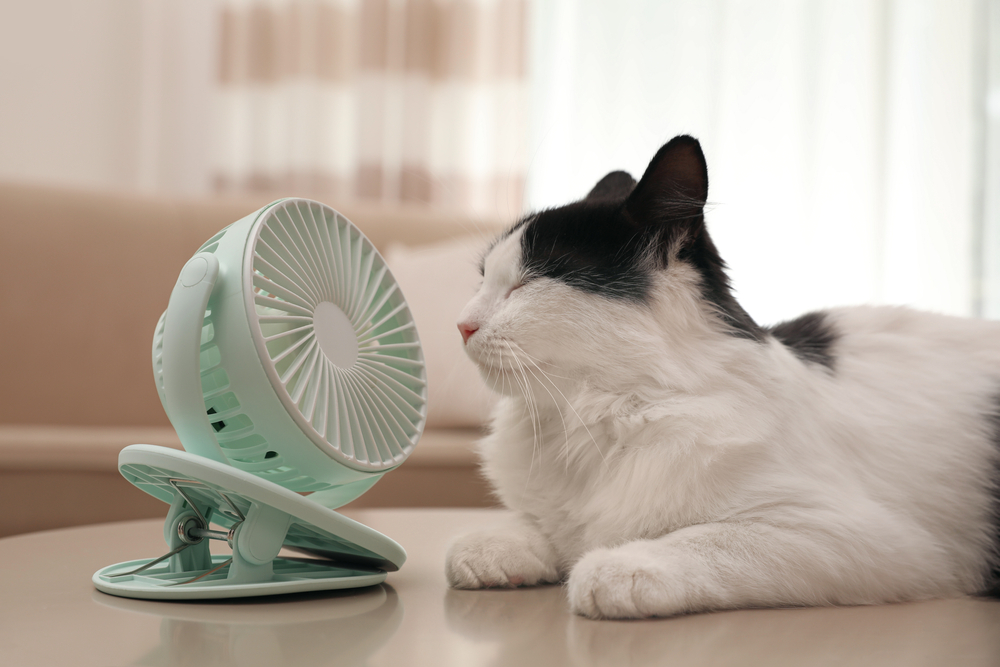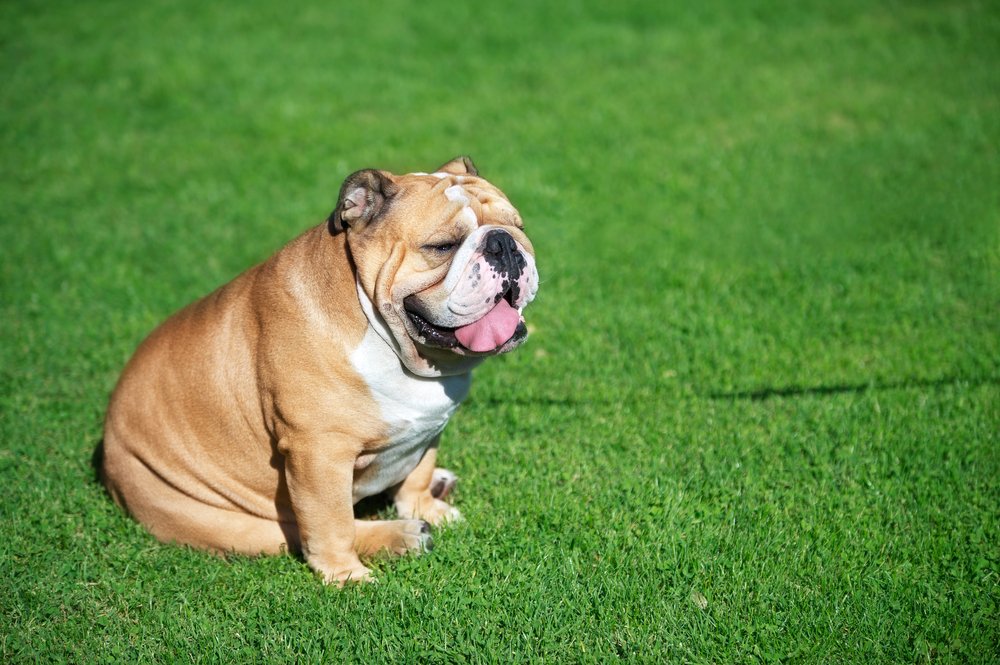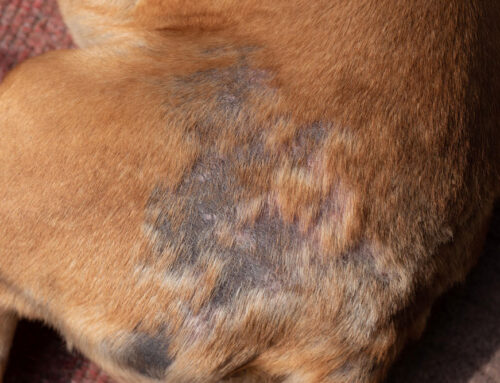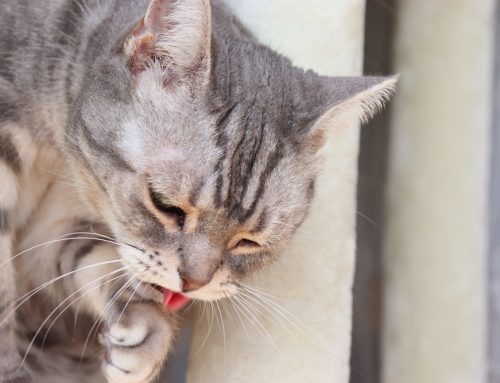The dog days of summer are here, but that does not mean your pet likes the extreme heat and humidity that defines an Alabama summer. Our team at Tidmore Veterinary Hospital consulted Barney the bulldog, an expert on pet heat safety, to provide you with information on keeping your pet from becoming a victim.
Barney the bulldog: “Rectal thermometers are the worst, but that is the most accurate method to assess your pet’s temperature.”
Tidmore Veterinary Hospital: The normal body temperature for your pet is between 101 and 102 degrees. Temperatures above this range are considered hyperthermic. Readings higher than 105 degrees indicate heatstroke and are extremely dangerous for your pet.
Barney: “As a bulldog, I am more prone to heat exhaustion than other pet breeds.”
TVH: All pets are susceptible to heat exhaustion, because they rely on panting and cooling from external sources to reduce their body temperature. They have a few sweat glands on their paws and around their nose, but these are not enough to promote the necessary level of cooling. Brachycephalic breeds, such as bulldogs, chow chows, pugs, Persian cats, and boxers are at higher risk for overheating, because their facial structure limits air movement, making them ineffective panters. Geriatric animals, overweight animals, and animals already suffering from a respiratory or cardiac issue are also at increased risk.
Barney: “When I get too hot, I get really tired and feel like I cannot breathe. This is scary for a pet.”
TVH: Initial signs can be subtle, but once your pet starts to overheat, heat exhaustion progresses quickly. Signs include:
- Excessive panting and drooling
- Lethargy
- Difficulting breathing
- Vomiting
- Diarrhea
- Incoordination
- Seizures
- Collapse
Barney: “I once became so overheated that I passed out and had to stay in the hospital for an entire week. That experience made me want to educate pet owners on heat safety.”
TVH: Heat exhaustion is a serious, medical emergency for pets that triggers an inflammatory response throughout their entire body. In severe cases, multiple body systems are affected, causing significant illness or death.
- Lungs — Damage to sensitive bronchioles and alveoli can result in respiratory distress.
- Heart — The extreme inflammation damages the heart’s ability to pump adequate blood supply throughout the body, and may lead to arrhythmias and shock.
- Kidneys — The inflammatory response can injure the kidneys, decreasing their ability to filter blood properly, which leads to acute kidney failure.
- Gastrointestinal (GI) — GI tract damage can result in bacteria entering the bloodstream, a condition called bacteremia. These bacteria can settle in the kidneys, liver, or heart, causing further problems.
- Clotting factors — A condition called disseminated intravascular coagulation (DIC) can be triggered, resulting in uncontrollable bleeding.
- Brain — The inflammatory response can result in swelling, hemorrhage, and necrosis in the brain.
Barney: “Pets suffering from heat exhaustion need to be cooled down appropriately.”
TVH: If your pet exhibits heatstroke signs, move them to a cool, well-ventilated area. Use a rectal thermometer to take their temperature. Any temperature higher than 103 degrees is cause for concern, but temperatures higher than 105 degrees indicate heatstroke. You can submerge your pet in cool water, ensuring their head stays above the water at all times. Do not use ice water to cool your pet, because the sudden drop in temperature could induce shock. You can also sponge your pet with towels soaked in cool water, concentrating on their abdomen and neck. Placing ice packs on their jugular area can also help, but you must wrap the packs in towels to protect your pet’s skin. Take your pet’s temperature every five minutes, and once their temperature reaches 103 degrees, or if their temperature is not decreasing, take them to Tidmore Veterinary Hospital immediately. Leaving the windows down and turning on the air conditioner for your trip to the hospital can further help cool down your pet.
Barney: “Preventing heat exhaustion in pets is better than treating the condition.”
TVH: If your pet suffers from heat exhaustion, they can have permanent debilitating effects, and in severe cases, they can die, making prevention key for keeping your pet safe.

- Keep your pet inside on hot, humid days, and walk them in the early morning or evening hours, to avoid the hottest times of day.
- Provide continuous access to fresh, cool water when possible. On outings, take bottled water and a water bowl, and offer water to your pet frequently.
- Avoid intense exercise on hot, humid days. Your pet may get excited about an exciting game of fetch and not stop to take a break when they start to overheat.
- Never leave a pet in an unattended vehicle. Leaving the windows cracked does not prevent the interior from reaching dangerous heat levels.
- Plan ahead in case you experience a power outage or your air conditioner stops working. You will need somewhere you can take your pet to ensure they stay cool.
- For outdoor pets, ensure they have shaded, well-ventilated areas and numerous water containers that are freshened frequently.
By following Barney’s helpful advice, hopefully you and your pet can have an enjoyable, cool summer. However, if you are ever concerned your pet may be overheating, do not hesitate to contact our team at Tidmore Veterinary Hospital.








Leave A Comment